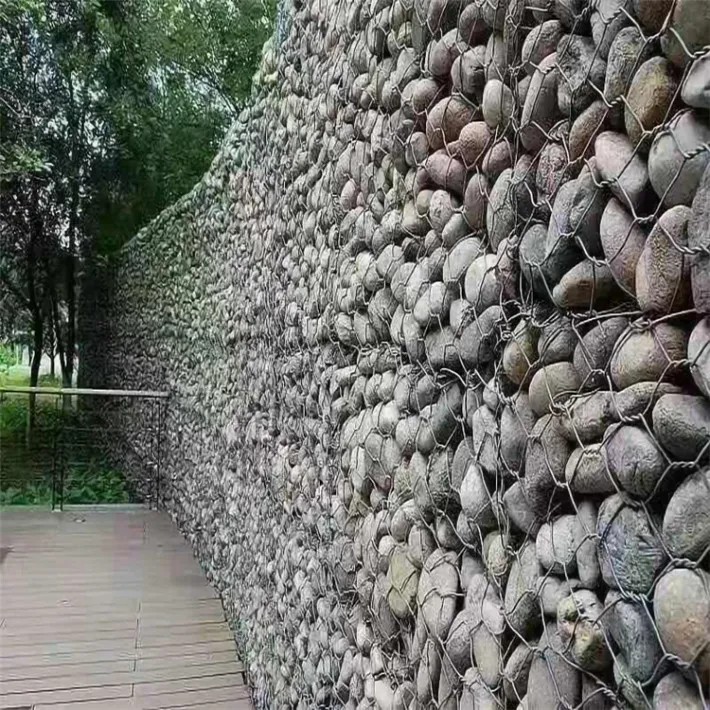-
 Phone:
Phone: -
 Email:
Email:

Innovative Rock Mesh Solutions for Effective Retaining Wall Construction and Stability Management
Rock Mesh Retaining Wall A Robust Solution for Erosion Control and Landscaping
In modern civil engineering and landscaping, the need for effective erosion control and the enhancement of outdoor aesthetics has led to the increased popularity of rock mesh retaining walls. These structures not only serve a functional purpose but also offer a unique blend of durability and visual appeal, making them a preferred choice for various projects ranging from residential properties to commercial landscapes.
Understanding Rock Mesh Retaining Walls
A rock mesh retaining wall is primarily constructed using a combination of welded wire mesh and natural stone or rock. The mesh acts as a frame that holds the rocks in place, providing stability while allowing water drainage, which is crucial to preventing soil erosion. This design is particularly effective in sloped terrains where traditional retaining walls might fail under the pressure of soil and water.
Benefits of Rock Mesh Retaining Walls
1. Erosion Control One of the chief purposes of a rock mesh retaining wall is to minimize soil erosion on slopes and hillsides. By holding back the soil, these walls prevent landslides and the loss of valuable topsoil, thereby maintaining the integrity of the landscape.
2. Natural Aesthetics The use of natural stones in conjunction with wire mesh allows these walls to blend seamlessly into the environment. Whether used in a garden, a park, or commercial landscaping, rock mesh retaining walls provide a rugged yet appealing appearance that complements natural features.
3. Versatility Rock mesh retaining walls can be adapted to various styles and architectural requirements. They can accommodate different grades and slopes, making them applicable for residential driveways, terraced gardens, and even industrial applications.
4. Cost-Effectiveness Compared to traditional poured concrete walls, rock mesh retaining walls can be more economical. The materials involved can often be sourced locally, reducing transportation costs. Furthermore, the installation process is usually faster and less labor-intensive.
5. Environmental Benefits By allowing for natural drainage, rock mesh retaining walls reduce the risk of water pooling, which can lead to plant deterioration and further erosion. Additionally, the use of locally-sourced materials minimizes the environmental footprint of construction projects.
rock mesh retaining wall

Installation Process
The installation of a rock mesh retaining wall involves several critical steps
1. Site Assessment A thorough evaluation of the site is essential to determine soil conditions, drainage patterns, and the required height and length of the wall.
2. Excavation The area where the wall will be installed must be excavated to create a stable foundation. This is vital for the wall’s durability and effectiveness.
3. Base Preparation A base layer of gravel is often laid down to provide additional drainage and stability. This layer helps prevent water from building up behind the wall.
4. Mesh Installation The welded wire mesh is shaped and placed according to the design specifications. It must be anchored securely to ensure it withstands the weight of the stones and the lateral pressure from the soil.
5. Stone Placement Finally, the chosen stones are placed within the mesh framework. Care is taken to select appropriately-sized stones that fit well together while providing a secure structure.
Conclusion
Rock mesh retaining walls represent a sophisticated solution for landscaping and erosion control challenges. Their blend of functionality, cost-effectiveness, and aesthetic appeal makes them an attractive option for both residential and commercial applications. As environmental considerations become increasingly important in construction, rock mesh retaining walls provide a sustainable alternative that reaffirms the harmony between human-made structures and the natural landscape. With proper installation and material selection, these walls can enhance not only the safety and utility of the land but also its beauty for years to come.
-
Wire Mesh for Every Need: A Practical SolutionNewsJul.25,2025
-
Steel Fences: Durable, Secure, and Stylish OptionsNewsJul.25,2025
-
Roll Top Fencing: A Smart Solution for Safety and SecurityNewsJul.25,2025
-
Cattle Farm Fencing Solutions for Maximum SecurityNewsJul.25,2025
-
Affordable Iron Binding Wire SolutionsNewsJul.25,2025
-
Affordable Galvanized Wire SolutionsNewsJul.25,2025
-
Wire Hanger Recycling IdeasNewsJul.25,2025








